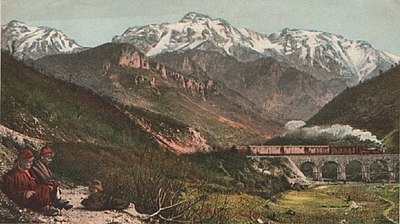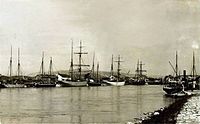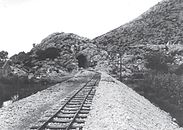Narenta Railway
| Narenta Railway | |||||||||||||||||||||||||||||||||||||||||||||||||||||||||||||||||||||||||||||||||||||||||||||||||||||||||||||||||||||||||||||||||||||||||||||||||||||||||||||||||||||||||||||||||||||||||||||||||||||||||||||||||||||||||||||||||||||||||||||||||||||||||||||||||||||||||||||||||||||||||||||||||||||||||||||||||||||||||||||||||||||||||||||||||||||||||||||||||||||
|---|---|---|---|---|---|---|---|---|---|---|---|---|---|---|---|---|---|---|---|---|---|---|---|---|---|---|---|---|---|---|---|---|---|---|---|---|---|---|---|---|---|---|---|---|---|---|---|---|---|---|---|---|---|---|---|---|---|---|---|---|---|---|---|---|---|---|---|---|---|---|---|---|---|---|---|---|---|---|---|---|---|---|---|---|---|---|---|---|---|---|---|---|---|---|---|---|---|---|---|---|---|---|---|---|---|---|---|---|---|---|---|---|---|---|---|---|---|---|---|---|---|---|---|---|---|---|---|---|---|---|---|---|---|---|---|---|---|---|---|---|---|---|---|---|---|---|---|---|---|---|---|---|---|---|---|---|---|---|---|---|---|---|---|---|---|---|---|---|---|---|---|---|---|---|---|---|---|---|---|---|---|---|---|---|---|---|---|---|---|---|---|---|---|---|---|---|---|---|---|---|---|---|---|---|---|---|---|---|---|---|---|---|---|---|---|---|---|---|---|---|---|---|---|---|---|---|---|---|---|---|---|---|---|---|---|---|---|---|---|---|---|---|---|---|---|---|---|---|---|---|---|---|---|---|---|---|---|---|---|---|---|---|---|---|---|---|---|---|---|---|---|---|---|---|---|---|---|---|---|---|---|---|---|---|---|---|---|---|---|---|---|---|---|---|---|---|---|---|---|---|---|---|---|---|---|---|---|---|---|---|---|---|---|---|---|---|---|---|---|---|---|---|---|---|---|---|---|---|---|---|---|---|---|---|---|---|---|---|---|---|---|---|---|---|---|---|---|---|---|---|---|---|---|---|---|---|---|
|
Neretva Bridge at Prenjalpe south of Jablanica
| |||||||||||||||||||||||||||||||||||||||||||||||||||||||||||||||||||||||||||||||||||||||||||||||||||||||||||||||||||||||||||||||||||||||||||||||||||||||||||||||||||||||||||||||||||||||||||||||||||||||||||||||||||||||||||||||||||||||||||||||||||||||||||||||||||||||||||||||||||||||||||||||||||||||||||||||||||||||||||||||||||||||||||||||||||||||||||||||||||||
|
Narenta Railway (still without the
Metković – Ploče section, which was only opened in 1942 ) and the Gabela – Zelenika railway line | |||||||||||||||||||||||||||||||||||||||||||||||||||||||||||||||||||||||||||||||||||||||||||||||||||||||||||||||||||||||||||||||||||||||||||||||||||||||||||||||||||||||||||||||||||||||||||||||||||||||||||||||||||||||||||||||||||||||||||||||||||||||||||||||||||||||||||||||||||||||||||||||||||||||||||||||||||||||||||||||||||||||||||||||||||||||||||||||||||||
| Gauge : | 760 mm ( Bosnian gauge ) | ||||||||||||||||||||||||||||||||||||||||||||||||||||||||||||||||||||||||||||||||||||||||||||||||||||||||||||||||||||||||||||||||||||||||||||||||||||||||||||||||||||||||||||||||||||||||||||||||||||||||||||||||||||||||||||||||||||||||||||||||||||||||||||||||||||||||||||||||||||||||||||||||||||||||||||||||||||||||||||||||||||||||||||||||||||||||||||||||||||
| Maximum slope : |
Adhesion 15 ‰ rack 60 ‰ |
||||||||||||||||||||||||||||||||||||||||||||||||||||||||||||||||||||||||||||||||||||||||||||||||||||||||||||||||||||||||||||||||||||||||||||||||||||||||||||||||||||||||||||||||||||||||||||||||||||||||||||||||||||||||||||||||||||||||||||||||||||||||||||||||||||||||||||||||||||||||||||||||||||||||||||||||||||||||||||||||||||||||||||||||||||||||||||||||||||
| Minimum radius : | 80 m | ||||||||||||||||||||||||||||||||||||||||||||||||||||||||||||||||||||||||||||||||||||||||||||||||||||||||||||||||||||||||||||||||||||||||||||||||||||||||||||||||||||||||||||||||||||||||||||||||||||||||||||||||||||||||||||||||||||||||||||||||||||||||||||||||||||||||||||||||||||||||||||||||||||||||||||||||||||||||||||||||||||||||||||||||||||||||||||||||||||
| Rack system : | Abbot (2 slats) | ||||||||||||||||||||||||||||||||||||||||||||||||||||||||||||||||||||||||||||||||||||||||||||||||||||||||||||||||||||||||||||||||||||||||||||||||||||||||||||||||||||||||||||||||||||||||||||||||||||||||||||||||||||||||||||||||||||||||||||||||||||||||||||||||||||||||||||||||||||||||||||||||||||||||||||||||||||||||||||||||||||||||||||||||||||||||||||||||||||
|
|||||||||||||||||||||||||||||||||||||||||||||||||||||||||||||||||||||||||||||||||||||||||||||||||||||||||||||||||||||||||||||||||||||||||||||||||||||||||||||||||||||||||||||||||||||||||||||||||||||||||||||||||||||||||||||||||||||||||||||||||||||||||||||||||||||||||||||||||||||||||||||||||||||||||||||||||||||||||||||||||||||||||||||||||||||||||||||||||||||
The Narentabahn or Neretva Railway was a narrow-gauge railway line from Sarajevo to Metković in Bosnian gauge , which was built and initially operated by the Bosnian-Herzegovinian State Railways (BHStB). After 1918 it was part of the railways of the Kingdom of Serbs, Croats and Slovenes (SHS) and the Yugoslav State Railways (JDŽ / JŽ). The 177.1 kilometer long mixed adhesion and rack railway was put into operation from 1885 to 1891 and extended to Ploče in 1942 . It was replaced in 1966 by the standard-gauge railway line Sarajevo – Ploče .
planning

After the development of the capital Sarajevo by the Bosna Railway , the continuation of the railway connection to Mostar and on to the Adriatic was planned. Sea access for Bosnia was only possible by rail via the port of Rijeka , which was over 900 kilometers away on Hungarian territory. It was decided to regulate the Neretva (Narenta), making Metković accessible to merchant ships.
Although the political situation in Bosnia had calmed down in the 1880s, the connection to the capital of Herzegovina was also strategically important. Like Sarajevo before, Mostar was a center of insurgent groups.
To overcome the up to 2000 meter high mountain range between Sarajevo and Mostar, two variants were worked out. A continuous adhesion railway with a longer vertex tunnel would have cost twice as much as the realized mixed adhesion and rack railway.
Construction and first years of operation
First, the 42.4 kilometer stretch from Mostar to Metković was built in the wide Neretva valley and opened to traffic on June 14, 1885. Due to the risk of flooding in the Neretva valley, the railway line was built at least 20 meters above the water level. The construction of the 19-kilometer section from Čapljina to Buna through the inaccessible Neretva Gorge was difficult.
From Mostar to Sarajevo, the railway initially continued to follow the Neretva. It was necessary to build numerous iron bridges on the winding section. In the narrow Neretva Valley, the route had to be partially blasted into the rock massif and built on stone supports. After Konjic (Konjica) the train left the Neretva valley to cross the Ivansattel with rack sections according to the Abbot system . After climbing a difference in altitude of 600 meters, the trains drove through the 648-meter-long Ivan peak tunnel and then descended to the Bosna Plain . Past the seaside resort of Ilidža , the trains reached the state capital Sarajevo.
The 134.7 kilometer section Mostar – Sarajevo plus the branch line to Ilidža Banja (Bad Ilidža) was opened in four sections:
| August 22, 1888: | Mostar – Ostrožac | 65.9 km |
| November 10, 1889: | Ostrožac – Konjic | 13.0 km |
| August 1, 1891: | Konjic – Sarajevo | 55.8 km |
| June 28, 1892: | Ilidža – Ilidža Spa | 1.28 km |
With the opening of the penultimate section, not only was the railway connection between Bosnia and Herzegovina established, but also the north-south connection from Bosanski Brod via Sarajevo to the Adriatic port of Metković.
Route and gradient conditions
| section | length | Maximum slope | Minimum radius |
|---|---|---|---|
| Metković – Mostar | 43.2 km | 3.33 ‰ | 100 m |
| Mostar – Konjic (Konjica) | 78.8 km | 10 ‰ | 80 m |
| Konjic – Sarajevo | 55.8 km | 60 ‰ (adhesion 15 ‰) | 125 m |
As the route profile below shows, the section from Metković to Mostar did not have any significant gradients. To overcome the Ivansattels between Konjic and Sarajevo, however, the gear drive had to be used.
Rack sections
The length of the rack and pinion sections on both sides of the Ivansattel was originally 25.2 kilometers. They were divided into the following sections:
| section | length | Maximum slope | |
|---|---|---|---|
| Trešanica Bridge – Podorašac | 882 m | +30 ‰ | |
| Podorašac – south portal of the Ivan tunnel | 10 807 m | +60 ‰ | |
| Ivan – Raštelica | 15 141 m | −60 ‰ | |
The rack sections in the stations were interrupted.
Train conveyance
Start of operation

In the early years, tank locomotives with an operating weight of 16.8 tons ran on the flat section from Metković to Mostar . The two-coupling machines with a front running axle pulled trains with 163 tons of mass . They were designated by the Yugoslav State Railways as the JDŽ 176 series.
So-called radial locomotives with the designation IIIa4 (JDŽ 189) carried trains with up to 175 tonnes of wagon mass on the winding section Mostar – Konjic with a gradient of up to ten per thousand . The machines produced a relatively high pulling force and, thanks to their Klose steering axles, were gentle on the tracks with the tight curves.
Tender machines IIIb4 (JDŽ 195) with combined adhesion and gear drive were used between Konjic and Sarajevo . On the Raštelica – Sarajevo section, a cogwheel locomotive carried a train with 110 tons of mass. On the actual Raštelica – Konjic mountain route, trains with a mass of over 60 tonnes up to a load of 110 tonnes were transported by a pull and a push locomotive or the train was split.
Later procurements
The Floridsdorfer Lokomotivfabrik supplied a second series of 38 class IIIc5 locomotives with gear and adhesion drive from 1894 to 1919. In contrast to their predecessors, the machines had two instead of one running axle. Until the change of operations in 1966, they managed the traffic on the rack-and-pinion routes as JDŽ 97.
At the turn of the 19th to the 20th century, the steadily growing traffic on the adhesion sections was mainly handled with articulated Klose type locomotives. In the first years of the 20th century, technical progress overtook this complicated construction. The development of the Krauss-Helmholtz steering frame in connection with laterally movable coupling axles made it possible to build steam locomotives with multiple coupling and at the same time well arching. It is worth mentioning the class IVa5 steam locomotives delivered by Krauss Linz from 1903 onwards , which were later designated as JDŽ 83 by the Yugoslav State Railways.
Locomotive JŽ 83-146 with a passenger train in Čapljina, 1968.
In addition to steam locomotives, the JDŽ also used diesel multiple units from 1938 onwards. JDŽ series 488 in Bradina in 1946.
Second generation diesel multiple units JŽ 802 in 1968 in Čapljina.
Further development

With the increase in freight traffic, especially timber, the limited capacity of the Neretva port in Metković became noticeable. Only ships with shallow drafts can operate on the Neretva and the shipping channel had to be permanently dredged. With the opening of the Narentabahn, tourism also began to develop. Hotels were built on the Ivan Pass and Ilidža was developed into a luxury spa. In order to increase the capacity of the line, the Bosnian-Herzegovinian state railways are considering plans to electrify the line based on the model of the Mariazellerbahn . A detailed project by the Prague company Křižík in 1912 , which provided for electrification with 11,000 volts alternating current using the water power of the Neretva, was rejected by the military administration because the infrastructure was susceptible to sabotage.
The narrow-gauge line Gabela-Zelenika with the turn-off to Dubrovnik - Gravosa was built but more out of military and economic reflection. From 1901 it enabled trains to continue their journey to the seaports there, albeit with a steep detour. It was not until 1942 that the direct connection from Metković to the newly built seaport Ploče was opened to traffic.
From 1928 the continuous connection from Belgrade to Dubrovnik was navigable. It led first to Užice , then via the Sargan Railway to Vardište and from there via the Bosnian Eastern Railway to Sarajevo. Through trains carried sleeping and dining cars . Due to the possible car body dimensions, the beds in the sleeping cars had to be arranged lengthways.
The rack sections on the Ivan limited the capacity of the route. Already at that time there was a tendency towards a regular-gauge expansion of the Sarajevo – Ploče line, but the conversion could not be carried out for financial reasons. A new route between Pazarić and Tarčin, a double hairpin bend at Raštelica and a new 3223 meter long Ivan tunnel made it possible to shorten the rack and pinion route to around eight kilometers between Podorošac and Bradina. The tunnel of the new line, which opened on April 10, 1931, had already been built with a standard gauge clearance profile and is now used by the Sarajevo – Ploče railway line. From 1938 the diesel express railcars of the series 448 (later JŽ series 801) built by Ganz were used on long-distance connections. They mastered the steep ramps without a gear drive and enabled several hours to be saved between Belgrade and Dubrovnik.
Because the narrow-gauge Narentabahn no longer met the traffic requirements of Yugoslavia , a large part of it was re-routed from 1963 and converted to standard gauge. On 26./27. November 1966 it was reopened as the Sarajevo – Ploče railway line . With the construction of the Neretva power stations, the narrow-gauge railway was later flooded in several places.
gallery
Pictures from the early days
Images from the 1940s to the present
The Neretva Bridge near Jablanica was destroyed after the narrow-gauge railway was shut down in the course of filming the Battle of the Neretva .
The first Ivan tunnel is now used as a section of the M17 for road traffic.
literature
- Keith Chester: The Narrow Gauge Railways of Bosnia-Hercegovina . Stenvalls, Malmö 2006, ISBN 91-7266-166-6 .
- Keith Chester: Bosnia-Hercegovina Narrow Gauge Album . Stenvalls, Malmö 2010, ISBN 978-91-7266-176-9 .
- Werner Schiendl : The railways in Bosnia and Herzegovina 1867-1918 . Edition Bahn im Film, Vienna 2015, ISBN 978-3-9503096-5-2 .
- Werner Schiendl, Franz Gemeinböck: The railways in Bosnia and Herzegovina 1918–2016 . Edition Bahn im Film, Vienna 2017, ISBN 978-3-9503096-7-6 .
- Franz Pfeuffer: About the construction and operation of the Bosnian-Herzegovinian state railway, especially the rack railway between Sarajevo and Konjica In: Journal of the Austrian Association of Engineers and Architects .
Year 1892, issue 22, p. 333ff. (Digitized 1865–1899 at TU Cottbus, PDF; 18.3 MB)
Year 1892, issue 23, p. 350ff. (Digitized 1865–1899 at TU Cottbus, PDF; 17.1 MB) - Helga Berdan: The power politics of Austria-Hungary and the railway construction in Bosnia-Herzegovina 1872-1914. (PDF; 8.3 MB) Diploma thesis at the University of Vienna , accessed on February 1, 2016 .
- Michael Franke: Analysis of Railway Landscapes. (PDF; 12.5 MB) Chapter 5.1 Railway history in Dalmatia. Master's thesis at the University of Natural Resources and Life Sciences, Vienna , April 2013, pp. 35–43 , accessed on April 1, 2016 .
- Victor von Röll : Encyclopedia of the Railway System. Bosnian-Herzegovinian Railways. Retrieved February 1, 2016 .
- Elmar Oberegger : Encyclopedia. Neretva Railway. Retrieved February 1, 2016 .
- Elmar Oberegger : Encyclopedia. Ploce Railway. Retrieved February 1, 2016 .
- History of the narrow-gauge sleeping car. Use of narrow-gauge sleeping cars: Europe historically. Wagonhotel Anger, accessed February 1, 2016 .
Remarks
- ↑ without the branch line Ilidža – Ilidža Banja
- ^ Keith Chester, The Narrow Gauge Railways of Bosnia-Hercegovina. S. 124-126 .
Web links
- Historic steam train 40 years ago: Ivan Pass 08/10/1966. In: Drehscheibe-Online.
- Karl Baedeker: From Sarájevo to Mostar and Gravosa (Ragusa). In: Austria-Hungary: Including Dalmatia and Bosnia; Handbook for Travelers. 1905, accessed February 1, 2016.
- Pruga uzanog kolosjeka Sarajevo – Mostar on the Serbian-language forum “Forum ljubitelja železnica” with lots of photos
- From Sarajevo to Dubrovnik in 1967 A selection of photos by Dave Sallery. In: The 76 cm gauge railways of Yugoslavia.
- Dubrovnik to Sarajevo in 1965 A selection of photos by Charlie Lewis. In: The 76 cm gauge railways of Yugoslavia.
- The Ivan Pass in 1966 A selection of photos by Helmut Dahlhaus. In: The 76 cm gauge railways of Yugoslavia.
- Sarajevo in 1966 A selection of photos by Helmut Dahlhaus. In: The 76 cm gauge railways of Yugoslavia.
- Sarajevo A selection of photos by Detlef Schikorr. In: The 76 cm gauge railways of Yugoslavia.
- Shunting in Sarajevo toilet locomotive 189-013, black and white cine film 1965.
- Dubrovnik - Hum color film (English) 1962.
- Route Sarajevo - Ivan Pass - Neretva - Dubrovnik Black and white cine film 1965.
- Line Dubrovnik - Gabela color film 1967, diesel railcar JZ 802.
























